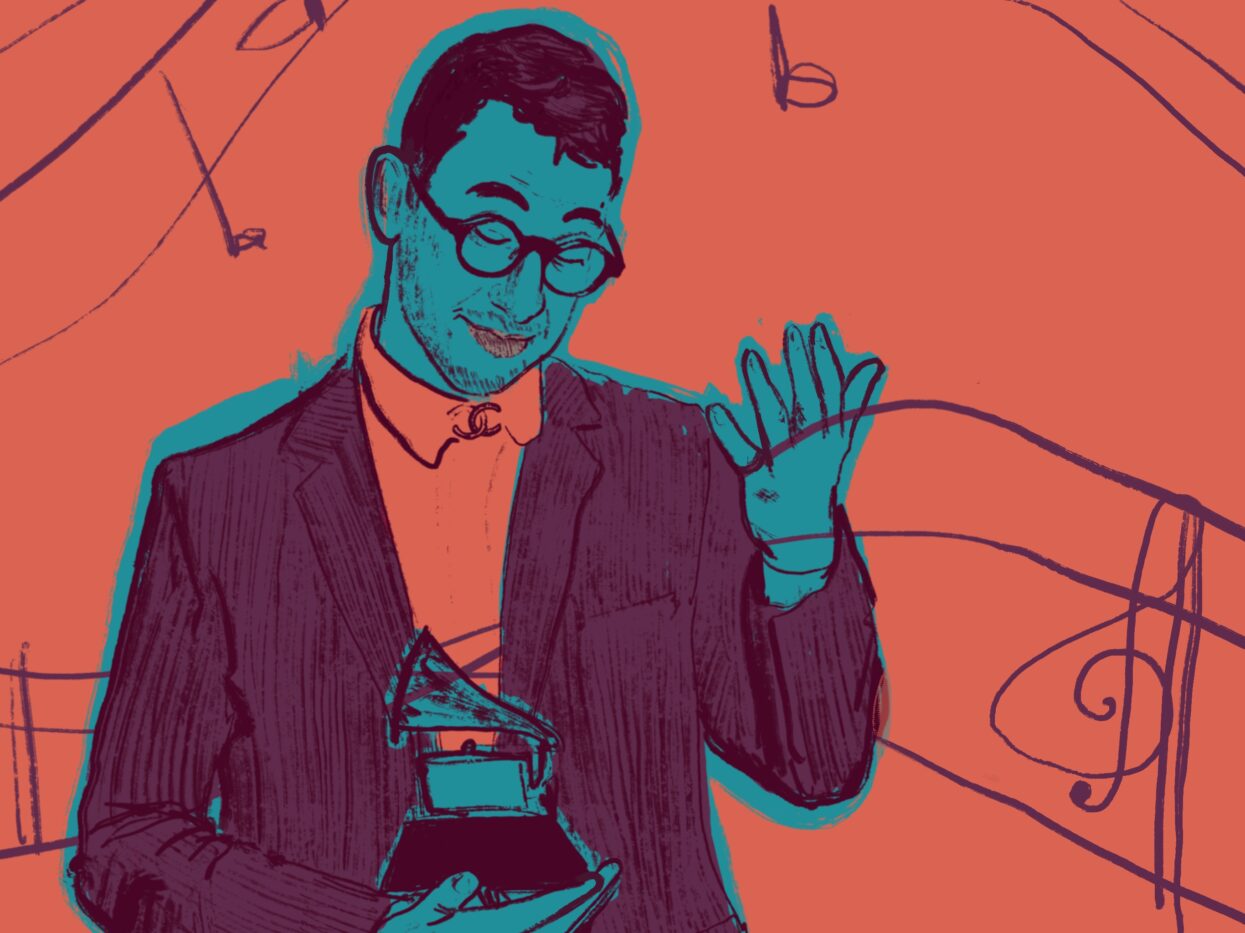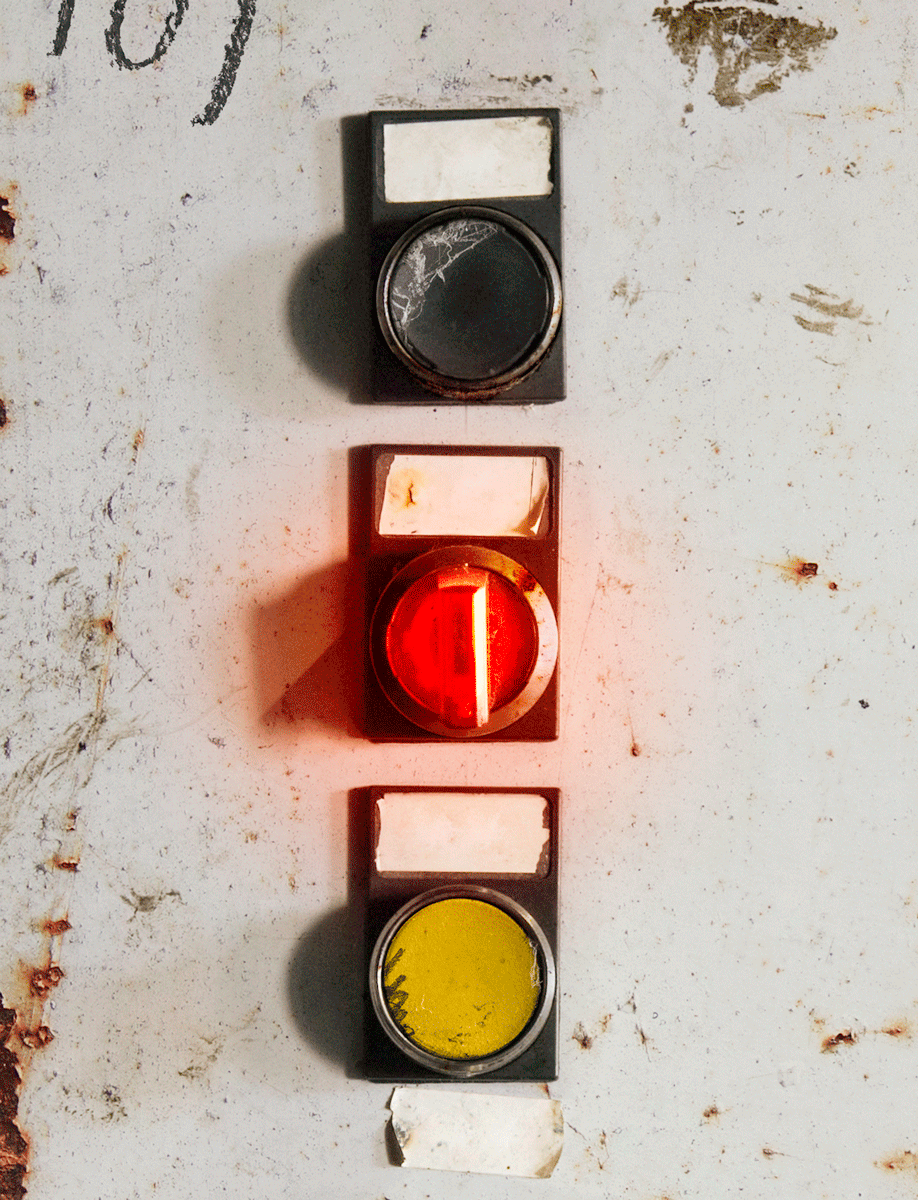An amber-colored glass paperweight sits in my nightstand drawer. It used to belong to my dad, who recently died, and to his grandmother before him. It’s shaped like a cube, with delicate flowers painted on each side, and it’s heavy in my palm. But I rarely pick it up, because I have no papers that need weighing down. The object occupies valuable space that might otherwise be used for a book, tissues, or anything else that I actually use. Still, I keep it, along with a few other pieces of what you might call “sentimental clutter”—personally meaningful yet impractical objects: a box of old birthday cards, a chipped seashell, a loyalty card for a café that no longer exists.
I’m reconsidering these mementos and many others as I try to clear out space in the small apartment I share with my husband and toddler. But I can’t seem to give them away. So they collect in the corners of rooms, evoking the randomness of a thrift store—and not the twee, curated kind. I don’t necessarily love the look of mismatched junk congesting the nooks and crannies of my home, but the clutter satisfies a deeper emotional need. Collectively, it represents every stage of my life, the lives of relatives who have died, and now the life of my not-quite-2-year-old daughter. It connects me to people and times that would otherwise feel lost.
On my dresser sits a metal box of train tickets and museum passes from travels that feel so far away, it’s as if I read about them in a book. Under the bed is a stash of old clothes, including the frilly top I wore on my 21st birthday. I haven’t tried it on in more than a decade, but when I take it out, my fingers still linger on the cheap ruffles; they recall a self who was freer, if more aimless. By now, I’ve schlepped some of this paraphernalia through 12 different apartments. I’m reminded of my former selves even when I’m starting anew.
Read the rest of this article at: The Atlantic
Nearly two centuries into the history of recorded sound, there is still no neat place for the producer in the mythology of pop music. He — as an ideal type, he is nearly always a he — is both a major and a minor character. He is at once a visionary creator and a bland executor of technical procedures, a name brand with star power and an anonymous functionary. He is the resourceful fifth Beatle coming to the aid of the heroes, and he is a villain, a representative of stifling, label-mandated homogeneity. He is an oracle: the market speaks through him. He is a minor god with a Promethean ability to bring new sounds into the world. He is often an abuser.
In the history of pop, the producer’s place is clearer. A producer serves as a shorthand for the dominant sound of a whole era: George Martin and Eddie Kramer for the “studio as a musical instrument” experiments of the late ’60s; Quincy Jones for the clinically precise grooves of ’70s and ’80s R&B; Glen Ballard for the drum-machine-and-acoustic-guitar mallscapes of ’90s adult alternative; Babyface for the smooth textures of that decade’s R&B; Max Martin for the Eurodance sheen of 2000s teen pop. Each of these sounds is curiously detachable from the music itself, and certainly from the artists who make it. In fact, you could say that the producer first arose as a significant figure in the pop world as a response to a need for a ready-made, portable sound. Phil Spector described his early-’60s maximalist production style as a result of a quest for “a sound so strong that if the material was not the greatest, the sound would carry the record.” Thrown-together girl groups and scrappy R&B outfits would come into Spector’s studio, and the maestro would turn their musical dribblings into something he once appropriately called “Wagnerian.” Instrumental tracks rerecorded on top of one another until they resembled less music than pure force, voices bathed in an all-consuming reverb — the “Wall of Sound.”
This sound, like any other, expresses a whole mode of musical production: the studio as a factory, bringing specialized labor together with technical power to produce interchangeable song widgets at maximum speed. You can read the economic history of pop back through the succession of epochal producers. Mutt Lange’s immaculate production on Def Leppard’s Hysteria (1987) sounds like money — the massive amounts of it that the consolidating major labels raked in on the strength of MTV hype and global distribution networks in that mythically excessive decade. In hip-hop, the producer evolved from the figure of the DJ to become an autonomous, entrepreneurial master of all trades, from engineering to songwriting and arranging. The European pop megaproducers like Stargate, who work in small groups on a case-by-case basis for labels in search of a guaranteed hit, resemble nothing so much as that other entrepreneurial figure, the consultant. The producer is an economic persona.
Read the rest of this article at: The Drift
BERLIN — Germany’s biggest companies are ditching the fatherland.
Chemical giant BASF has been a pillar of German business for more than 150 years, underpinning the country’s industrial rise with a steady stream of innovation that helped make “Made in Germany” the envy of the world.
But its latest moonshot — a $10 billion investment in a state-of-the-art complex the company claims will be the gold standard for sustainable production — isn’t going up in Germany. Instead, it’s being erected 9,000 kilometers away in China.
Even as it chases the future in Asia, BASF, founded on the banks of the Rhine in 1865 as the Badische Anilin- & Sodafabrik, is scaling back in Germany. In February, the company announced the shutdown of a fertilizer plant in its hometown of Ludwigshafen and other facilities, which led to about 2,600 job cuts.
“We are increasingly worried about our home market,” BASF Chief Executive Martin Brudermüller told shareholders in April, noting that the company lost €130 million in Germany last year. “Profitability is no longer anywhere near where it should be.”
Such malaise now pervades the whole of the German economy, which slipped into a recession in the first quarter amid a flurry of surveys showing that both companies and consumers are deeply skeptical about the future.
Read the rest of this article at: Politico
As the COVID-19 pandemic eases, a mental-health crisis still has us in its grip. My fellow-psychiatrists and I continue to be flooded with referrals, desperate calls, emergencies, and relapses—likely the consequences of years of isolation and grinding anxiety, loss, school disruption, and who knows what kinds of viral assaults on the brain. Preliminary studies report elevated rates of suicide, anxiety and depression, addiction, developmental delay, and psychiatric E.R. visits. Socially marginal people, health-care workers, and the young all seem especially at risk.
COVID has left us destabilized, in the midst of what might be thought of as a psychiatric pandemic. How bad will this be? Who will escape harm, and who will suffer the most? With the virus, we eventually understood the answers to these questions and focussed our public-health efforts accordingly. But the psychiatric consequences of the pandemic will be intrinsically more complex, varied, and obscure. First, there are millions of mourners whose loved ones succumbed to COVID, often in terrible, sudden ways. Then there are some who may be suffering from subtle neuropsychiatric effects of the infection. In addition, there are those stuck in chronic states of fight or flight, or helplessness—mental modes that affect our sense of time. Such people may be jumpy, irritable, violent, trigger-happy, drugged out, avoidant, defeated, morose, or self-harming, for reasons that no one can recall. Doug won’t acknowledge that he’s getting high so often because of the stress of the pandemic. Jen will be incensed if you imply that she’s cutting herself because of the difficulties of the past three years. As with traumas suffered by soldiers in war, the COVID past will slip into the present, darkening the future.
Read the rest of this article at: The New Yorker
You are getting married, and of course I have feelings about that. I think I might go watch some TV.
I am just beginning to know your man. He’s from another country, a carpenter with quick eyes under sleepy lids. I like his way of glancing off to the side and drawing out the first syllable, and the slow chuckle that breaks out of him at dismaying turns. You met that first summer of COVID, through the friend whose place you were staying at to get a break from staying at mine. “Batshit in love” is how you described it a few months later, standing in my kitchen. He built you a bed.
Ten years ago, at my wedding to N., Mom and Dad walked me down the aisle together, one on either side of me. I had assumed you would want the same. But no: you have asked me to give you away.
I need to write my speech. Keep it lively and simple, people say. Be funny, but don’t overdo it; be heartfelt, but don’t get too heavy. Earlier this year, I gave a toast at an old friend’s wedding. I was anxious about standing up in front of people, but the actual writing of the speech was not difficult; I was able to see, clearly enough, my friend and our shared history, the shape of it, and the words came easily in the hours before the rehearsal dinner. Whereas this task is gnawing at me.
Brief, bounded, securely valedictory, as a form the wedding speech is perhaps not well suited to the twin relationship, which is both totalizing and ambivalent. But, really, what form could be? We could look to the “oblong terracotta object with rounded angles and two cavities at each end” that Alessandra Piontelli, an Italian psychotherapist, observed a pair of five-year-olds holding in a West African village in 2000. It was the custom there, Piontelli claims, for sets of young twins to carry one of these at all times, using it as a leash to each other and eating their meals from its cavities until the age of seven, when the object would be broken in two and each twin could go their own way.
Read the rest of this article at: The New Yorker







